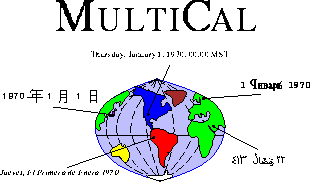|
|
|
Publications
- Curtis Dyreson,
William Evans,
Hong Lin, and
Richard Snodgrass.
Efficiently Supporting Temporal Granularities.
IEEE Transactions on Data and Knowledge Engineering (TKDE),
12(4), July/August 2000, pp. 568-587.
Electronic
Edition from TKDE
-
C. Bettini, C. Dyreson,
W. Evans, R. Snodgrass, and X. Sean Wang,
A Glossary of Time Granularity Concepts.
In Temporal Databases: Research and Practice, Lecture Notes in
Computer Science 1399,
O. Etzion, S. Jajodia, and S. Sripada, editors,
Springer-Verlag, pp. 406-411.
LNCS Electronic Edition
|
PDF
-
Curtis E. Dyreson
and Richard T. Snodgrass,
Temporal Granularity.
In The TSQL2 Temporal Query Language.
Richard T. Snodgrass, editor.
Kluwer Academic Press, 1995. pp. 345-382.
DBLP Electronic Edition
Synopsis
Below is the (old) abstract from the TKDE paper.
Granularity is an integral feature of all temporal data.
For instance, a person's age is commonly given to the granularity
of years and the time of their next airline flight
to the granularity of minutes.
Indeterminacy, or don't know when information,
is a companion to granularity.
A birthday, given to the granularity of days,
does not reveal precisely when a person was born, only
that they were born sometime during the indicated day.
We define a granularity as a calendar-dependent partitioning of the time-line.
Pairs of granularities are related
in that some granularities are finer
or coarser with respect to other granularities.
A granularity lattice records all the relationships
between granularities, even among granularities in different calendars.
A time at a given granularity is indeterminate at all finer granularities.
We extend the syntax and semantics of SQL-92
to support mixed granularities.
This support rests on two operations, scale and cast,
that move times within the granularity lattice, e.g., from days to months.
We demonstrate that our solution is practical by outlining an
efficient implementation.
The implementation uses several optimization strategies to mitigate the
expense of accommodating multiple granularities.
Curtis E. Dyreson
© 1993-2001. All rights reserved.
|
